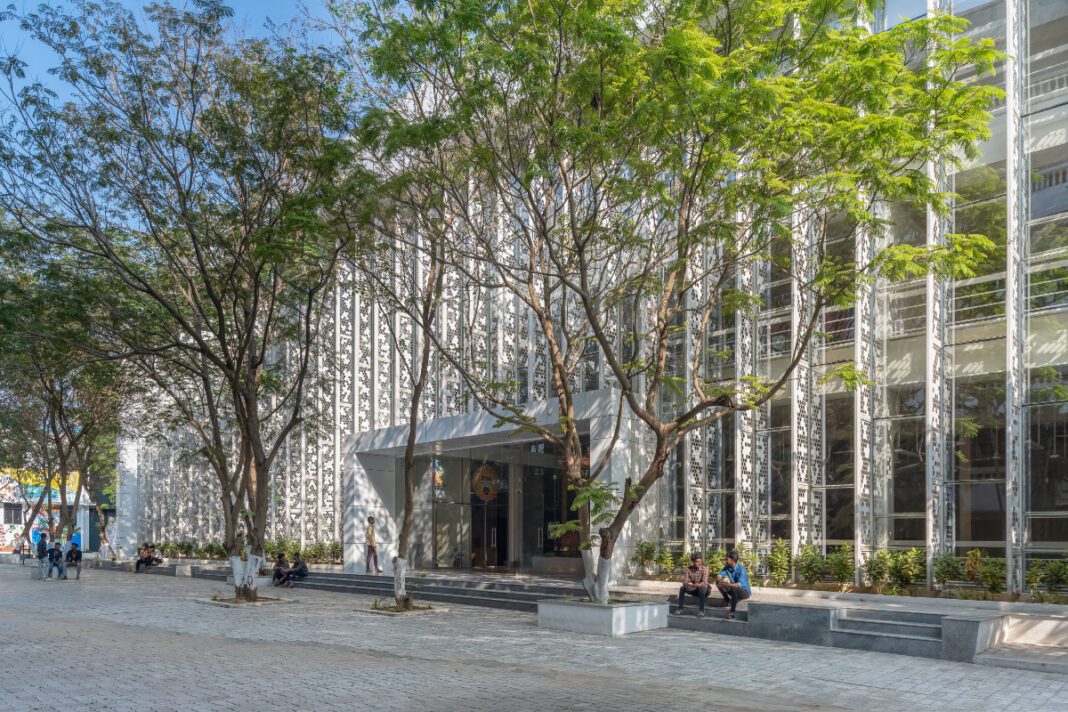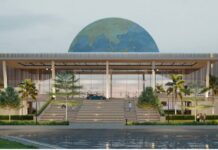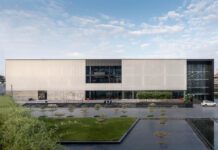Amidst the vibrant campus of REC, the IDEA Factory, designed by VS Vigneswar of Architecture Plus Value, is a striking example of modern architecture, pushing the limits of sustainable design. Set on a plot with unique spatial constraints, the design challenges were met with a vision to foster creativity while maximising the available area.
The building’s thoughtful orientation and use of sustainable materials ensured a comfortable and energy-efficient environment, while the open layout allowed natural light and fresh air to flow freely throughout. Embracing a steel framework, the structure is both visually striking and functional, with minimal columns that create a sense of openness.
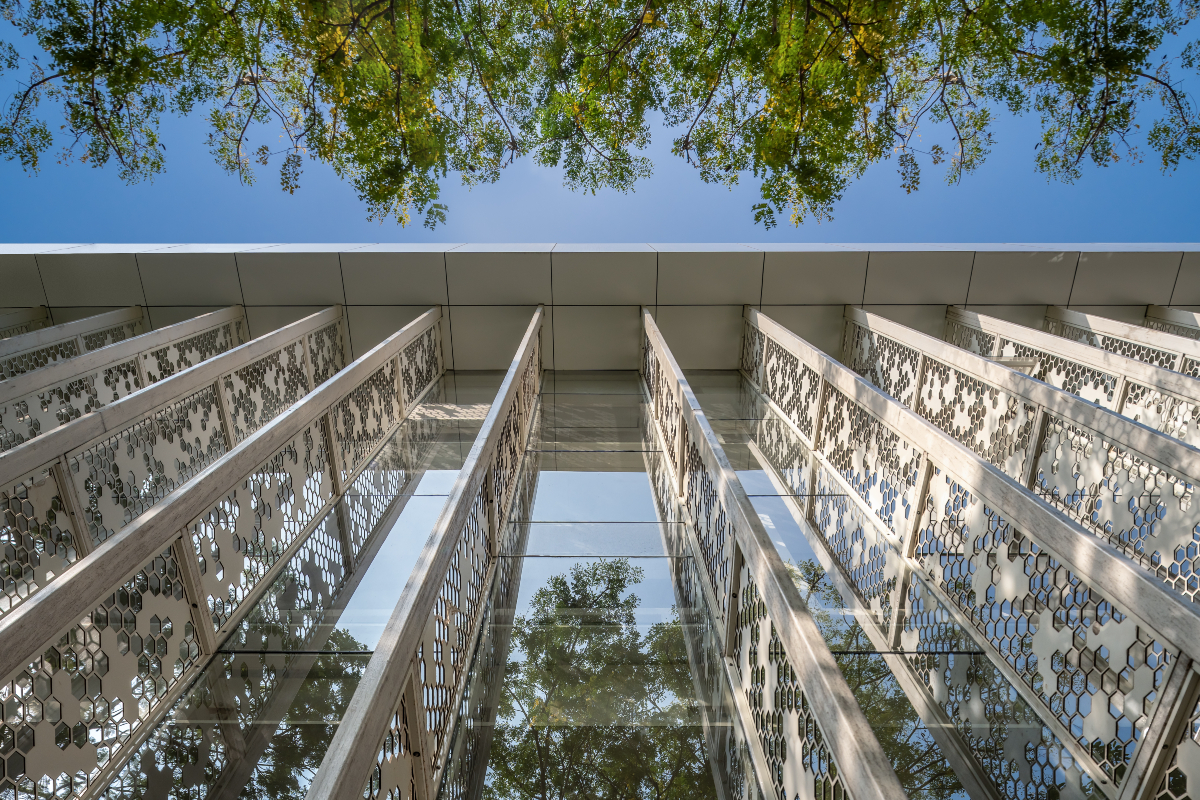
Adaptive Design
The design of the REC IDEA Factory Building was inspired by the university’s commitment to fostering creativity, collaboration, and academic excellence. The challenge was to create a structure that felt contemporary and innovative while respecting the traditional academic setting of the campus. The building’s modern steel framework and clean lines reflect forward-thinking design, while elements like the gold-accented mullions and the balance of neutral tones integrate seamlessly into the academic environment.
The openness and flexibility of the design reflect the evolving needs of students and faculty, encouraging an adaptable space that supports both academic rigour and creativity. This balance between the modern and the traditional is further reflected in the Atrium Collaboration Hub, which acts as both a functional space and a focal point of connection within the campus, bringing people together in an engaging way.
Luminous Spaces
Steel was chosen as the primary structural material due to its strength, flexibility, and aesthetic potential. Its ability to create large, column-free spaces allowed us to design expansive, open environments that could easily be reconfigured to suit various academic and collaborative activities. Steel’s inherent flexibility also supports the building’s dynamic use—enabling quick modifications to layouts, whether for a small seminar or a large collaborative event. Aesthetically, the exposed steel framework contributes to the building’s modern, industrial look while allowing for expansive glass facades and natural light. Steel also supports the building’s sustainability goals by providing a durable and long-lasting structure that requires minimal maintenance.

Moreover, sustainability was a key driver in the design and material selection. The use of eco-friendly materials, such as High-Pressure Laminate (HPL) panels and ACP panels, minimises the environmental impact of the building. The panels’ durability ensures that the building will require less maintenance and replacements over time, further contributing to its sustainability. Large windows optimise natural light, reducing the need for artificial lighting during the day, while the insulating properties of the ACP panels help regulate the building’s internal temperature, reducing reliance on HVAC systems. The focus on energy efficiency aligns with the university’s environmental goals by minimising the building’s carbon footprint and supporting sustainable campus development.
To balance aesthetics and functionality, the choice of materials like CNC-cut HPL panels, ACP panels, and gold-accented mullions was carefully considered to achieve a balance between aesthetics, functionality, and sustainability. HPL panels provide a visually striking yet durable exterior cladding, offering both texture and sustainability due to their eco-friendly manufacturing process. The ACP panels contribute to the building’s energy efficiency, offering excellent thermal insulation and reducing the overall energy consumption of the building. The gold-accented mullions add a touch of elegance and luxury to the modern design, elevating the building’s appearance while maintaining a professional and academic tone. These materials also help with maintenance by offering resistance to wear and environmental degradation, ensuring the building’s long-term durability and sustainability.
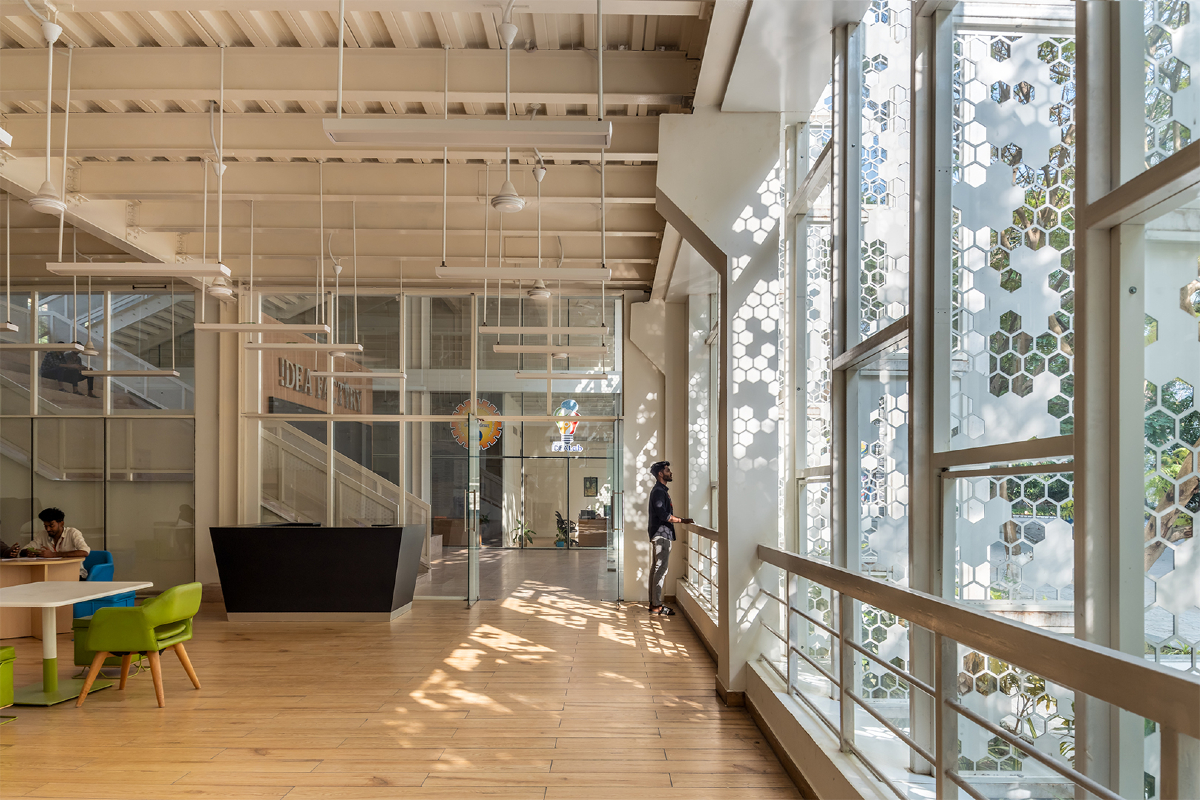
Interactive Atrium
The Atrium Collaboration Hub is at the heart of the REC IDEA Factory Building, designed as an open, interactive space that facilitates spontaneous collaboration. The large central staircase functions as both a vertical circulation element and an informal gathering area, blurring the line between functional and social space.
By integrating seating into the staircase, the team created a vibrant space where students and faculty can engage in conversation, share ideas, and work together. The openness of the space, supported by the steel framework, fosters an environment where interaction is encouraged — whether it is a quick discussion or an impromptu meeting. This design reflects the building’s mission of supporting academic excellence through collaboration, making it a dynamic hub for the university community.
Furthermore, flexibility was a cornerstone of the building’s design. The steel framework allows for large, open-plan spaces that can easily be adapted for various uses. On the ground floor, the collaborative areas are designed with movable furniture and modular layouts, allowing spaces to be reconfigured depending on the activity, whether for group study, workshops, or informal meetings. The classrooms on the first floor are designed to accommodate a variety of seating arrangements, promoting interactive learning and group work. Similarly, the seminar halls on the top floors can be adjusted for different types of events — whether large lectures, group discussions, or workshops — ensuring the building can adapt to a broad range of academic and collaborative needs.
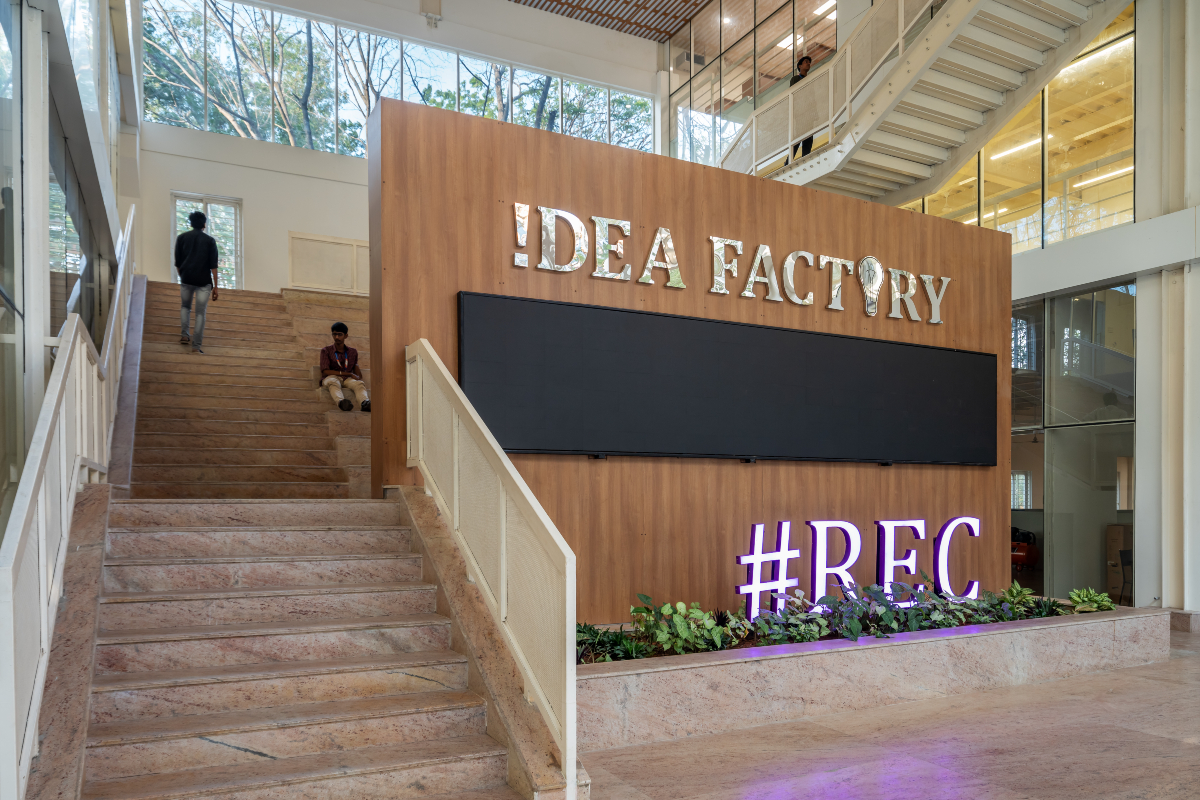 Radiant Academia
Radiant Academia
The predominantly white colour palette plays a crucial role in enhancing the atmosphere of the building. White surfaces reflect natural light, which not only makes the interior spaces feel larger and more open but also contributes to a bright and inspiring environment. This helps create a sense of clarity and focus — essential for academic work and collaboration.
The clean, neutral backdrop allows the architectural features — such as the gold-accented mullions, the sleek steel structure, and the expansive windows — to stand out, contributing to a sense of calm and sophistication. Large windows bring in natural light, connecting the interior with the outside environment and ensuring that the building feels open and inviting. The combination of these elements fosters an environment that encourages learning, creativity, and interaction.
Structural Agility
One valuable lesson from the REC IDEA Factory Building is the importance of flexibility in educational environments. As academic and collaborative activities continue to evolve, designing spaces that can easily adapt to changing needs is crucial. The use of steel in this project demonstrates its potential for creating large, flexible spaces while maintaining structural integrity and aesthetic appeal. Emerging technologies in materials and construction techniques, such as CNC-cut panels and energy-efficient systems, will continue to shape the next generation of campus architecture.

Steel construction, with its strength and adaptability, will remain a cornerstone in the design of educational buildings, enabling the creation of dynamic spaces that support innovation, interaction, and sustainability. As universities and academic institutions prioritise flexible, collaborative environments, the integration of emerging materials and technologies will be essential in achieving these goals.
Quote
Our passion for the student community was the driving force behind the REC IDEA Factory Building. We approached this project with a deep commitment to enhancing the quality of learning spaces, while ensuring they inspire creativity, foster collaboration, and meet the evolving needs of students and faculty. One of the most defining aspects of this project was the challenging timeline of just six months for completion. Despite the tight schedule, we were able to deliver a building that reflects both the university’s vision and our professional commitment to creating impactful, sustainable architecture.
– VS Vigneswar, Principal Architect, Architect Plus Value
Fact File
Project: REC Idea Factory
Client: Rajalakshmi Engineering College
Architect: Architecture plus Value
Structural Consultant: Mr Punithan
Project Management: REC
Fabricator: Popular Foundations
Supplier: TATA Blue Scope
Status: Completed


